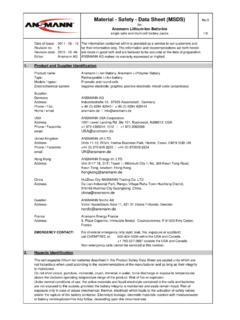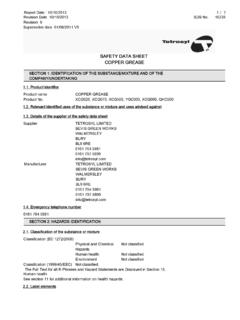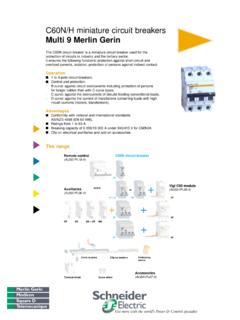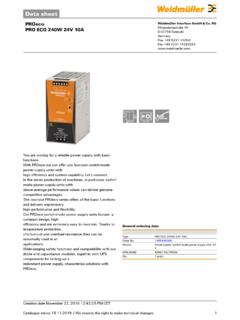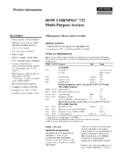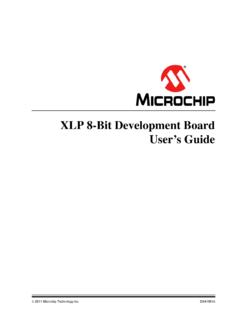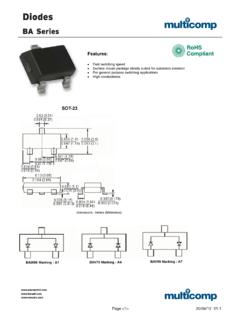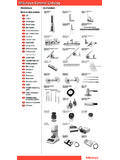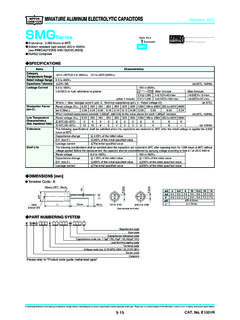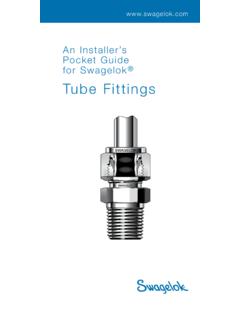Transcription of Stainless Steel Grade 316 / 1
1 Stainless Steel Grade 316 / Stainless Steel types and Typical chemical Composition are also known as grades 316. and 3164L respectively. Grade 316 is % 316 316L 316H. an austenitic Grade second only to 304. C in commercial importance. Mn 316 Stainless Steel contains an addition of molybdenum that gives it improved Si corrosion resistance. This is P particularly apparent for pitting and crevice corrosion in chloride S environments. Cr 16-18 16-18 16-18. 316L, the low carbon version of 316 Mo 2-3 2-3 2-3. Stainless Steel , is immune to grain Ni 10-14 10-14 10-14. boundary carbide precipitation (sensitisation). This makes it suited to N - use in heavy gauge (over about 6mm). welded components.
2 For elevated temperature applications Typical Mechanical Properties the high carbon variant, 316H Stainless Steel and the stabilised Grade 316Ti Grade 316 316L 316H. Stainless Steel should be employed. Tensile Strength 515 485 515. The austenitic structure of 316 (MPa). Stainless Steel gives excellent Compression toughness, even at cryogenic Strength 170 170 170. temperatures. (MPa). Property data given in this document is Proof Stress typical for flat rolled products covered 205 170 205. (MPa). by ASTM A240/A240M. ASTM, EN or other standards may cover products Elongation A5. 40 40 40. sold by Aalco. It is reasonable to (%). expect specifications in these Hardness standards to be similar but not 95 95 95.
3 Rockwell B. necessarily identical to those given in this datasheet. Typical Physical Properties Applications Property Value Initially developed for use in paper mills Density g/cm3. 316 Stainless Steel is now typically used in: Melting Point 1375-1400 C. Modulus of Elasticity 193 GPa Food processing equipment Electrical Resistivity .m Brewery equipment chemical and petrochemical equipment Thermal at Laboratory benches & equipment Conductivity 100 C. Coastal architectural panelling /K at Coastal balustrading Thermal Expansion 100 C. Boat fittings chemical transportation containers Heat exchangers Mining screens Nuts and bolts X. Springs Medical implants abc Aalco is a registered trademark of Aalco Metals Ltd Copyright: Aalco Metals Ltd, The Hersham Centre, Hersham Green, Hersham, Surrey KT12 4HP.
4 All Data is indicative only and must not be seen as a substitute for the full specification from which it is drawn. In particular, the mechanical property requirements vary widely with product form and product dimensions. For more complete details please refer to the relevant specification The BS EN Specifications for Stainless Steel are listed on a separate Datasheet. Alloy Designations Cold Working Stainless Steel 316 also corresponds to the Grade 316 is readily brake or roll formed following standard designations and into a variety of parts. It is also suited to specifications: stamping, heading and drawing but post work annealing is recommended to relieve internal stresses.
5 Euronorm UNS BS En Grade Cold working will increase both strength S31600 316S31 58H 316 and hardness of 316 Stainless Steel . S31603 316S11 - 316L. - S31609 316S51 - 316H. Hot Working - 320S31 - 316Ti All common hot working processes can be performed on 316 Stainless Steel . Hot Corrosion Resistance working should be avoided below 927 C. The ideal temperature range for hot Grade 316 has excellent corrosion working is 1149-1260 C. Post-work resistance when exposed to a range of annealing is recommended to ensure corrosive environments and media. It is optimum corrosion resistance. usually regarded as marine Grade . Stainless Steel but is not resistant to warm sea water. Warm chloride environments can Heat Treatment cause pitting and crevice corrosion.
6 Grade 316 is also subject to stress corrosion cracking above around 60 C. 316 Stainless Steel cannot be hardened by heat treatment. Solution treatment or annealing can be Heat Resistance done by rapid cooling after heating to 1010-1120 C. 316 has good resistance to oxidation in intermittent service to 870 C and in continuous service to 925 C. However, Machinability continuous use at 425-860 C is not recommended if corrosion resistance in 316 Stainless Steel has good machinability. water is required. In this instance 316L is Machining can be enhanced using the recommended due to its resistance to following rules: carbide precipitation. Where high strength is required at Cutting edges must be kept sharp.
7 Dull temperatures above 500 C, Grade 316H is edges cause excess work hardening. recommended. Cuts should be light but deep enough to prevent work hardening by riding on the surface of the material. Fabrication Chip breakers should be employed to assist in ensuring swarf remains clear of the work Fabrication of all Stainless steels should be Low thermal conductivity of austenitic done only with tools dedicated to Stainless alloys results in heat concentrating at Steel materials. Tooling and work surfaces the cutting edges. This means coolants must be thoroughly cleaned before use. and lubricants are necessary and must These precautions are necessary to avoid be used in large quantities.
8 Cross contamination of Stainless Steel by easily corroded metals that may discolour the surface of the fabricated product. X. abc . Aalco is a registered trademark of Aalco Metals Ltd Copyright: Aalco Metals Ltd, The Hersham Centre, Hersham Green, Hersham, Surrey KT12 4HP. All Data is indicative only and must not be seen as a substitute for the full specification from which it is drawn. In particular, the mechanical property requirements vary widely with product form and product dimensions. For more complete details please refer to the relevant specification The BS EN Specifications for Stainless Steel are listed on a separate Datasheet. Welding Supplied Forms Fusion welding performance for 316 316 Stainless Steel is typically supplied by Stainless Steel is excellent both with and Aalco in a range of finishes in the following without fillers.
9 Recommended filler rods and forms: electrodes for 316 and 316L are the same as the base metal, 316 and 316L Sheet respectively. Heavy welded sections may Plate require post-weld annealing. Grade 316Ti Welded mesh may be used as an alternative to 316 in Quarto plate heavy section welds. Round bar Oxyacetylene welding has not been found Flat bar and rolled edge flat bar to be successful for joining of 316 Stainless Equal angle Steel . Square bar Hollow bar Seamless pipe Welded pipe 316Ti Seamless butt weld fittings Welded butt weld fittings Another variation of 316 is available. This Flanges variation is 316Ti. Stainless Steel Grade Seamless tube 316Ti contains a small amount of titanium.
10 Hygienic fittings Titanium content is typically only around Round, square and rectangular The titanium atoms stabilise the decorative tube structure of the 316 at temperatures over 800 C. This prevents carbide precipitation at the grain boundaries and protects the This information is based on our present metal from corrosion. The main advantage knowledge and is given in good faith. of 316Ti is that it can be held at higher However, no liability will be accepted by the temperatures for a longer period without Company is respect of any action taken by sensitisation (precipitation) occurring. 316Ti any third party in reliance thereon retains physical and mechanical properties similar to standard grades of 316.
